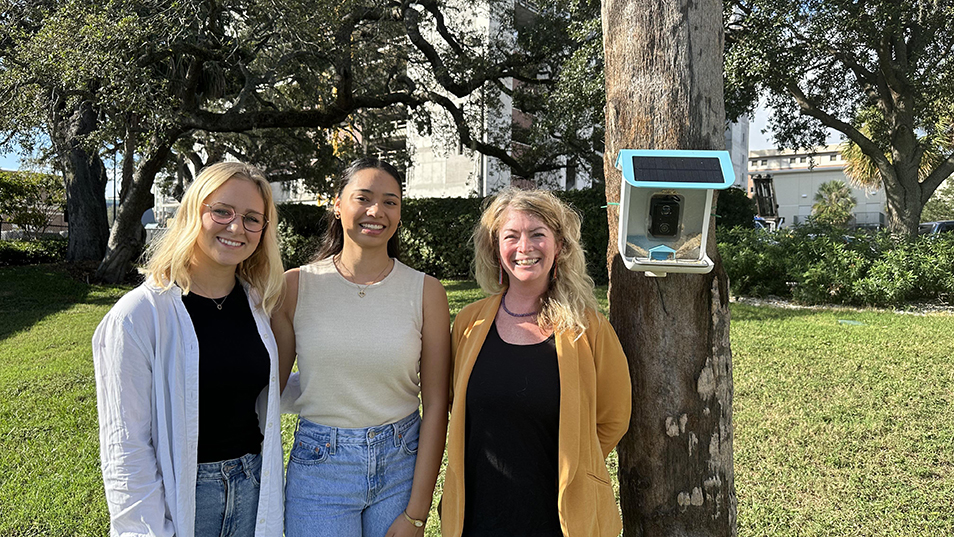Contact us
401 W. Kennedy Blvd.
Tampa, FL 33606-13490
(813) 253-3333
Have you ever stopped to look at the birds on The University of Tampa’s campus and wondered about their species?

Alexandra Larson ’24, Katherine Gutierrez ’24 and their advisor, assistant teaching professor of biology Amber Brace, with one of the bird feeders on campus.
That was the case for Katherine Gutierrez ’24 and Alexandra Larson ’24 and their advisor, assistant teaching professor of biology, Amber Brace.

A squirrel is caught on camera eating birdseed from one of the eight birdhouses on campus. Photo courtesy of Amber Brace

Brace, assistant teaching professor of <a href='/content/ut/en/academics/college-of-natural-and-health-sciences/department-of-biology/biology-majors-and-minors"'>biology</a>, received a Research Innovation and Scholarly Excellence (RISE) grant to look at the composition of birds and how it changes over time on campus. Photo courtesy of Brace
Have a story idea? Contact Brianna Kwasnik, Digital Content Editor/Writer
Read more UT Life stories.
More UT News